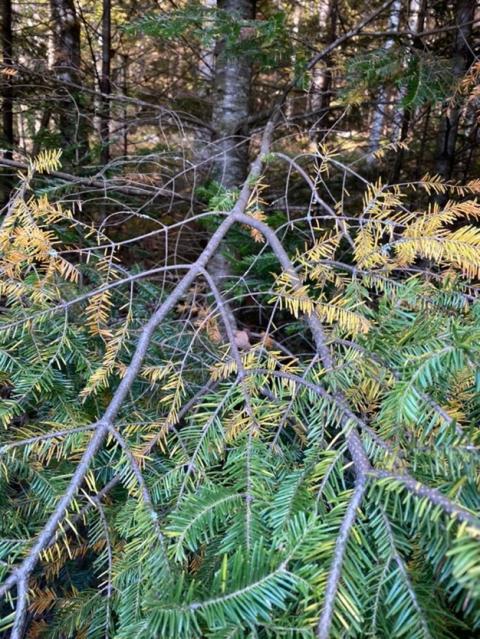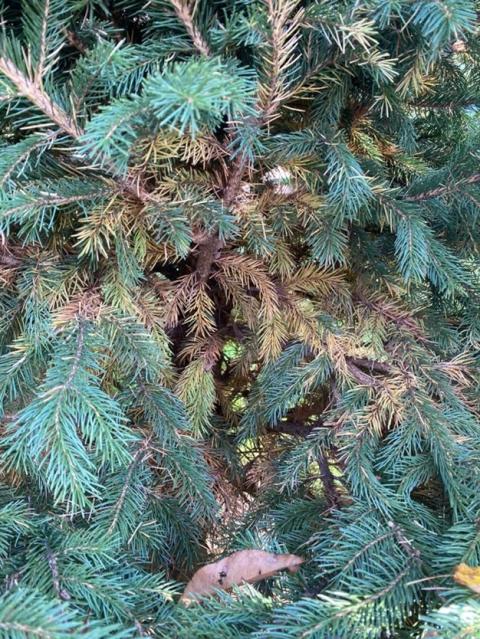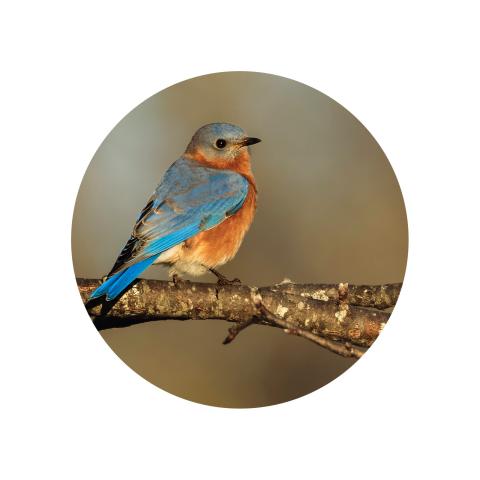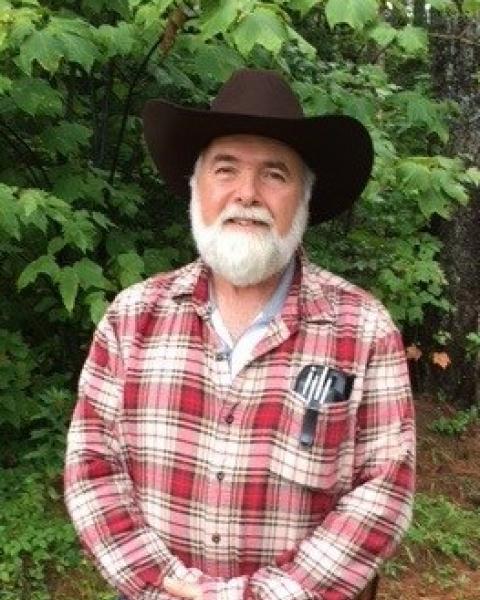Spruce & Fir Needles
Hello everyone! We are now midway through October and hopefully enjoying the fall colors before they are gone for another year.
Recently I was asked to look at some ‘browning’ needles on some spruce and fir trees. These particular trees have been carefully cared for and even trimmed over the years, so are looked after much more than most trees. With that in mind, the fact that there are problems with these trees was a bit more troubling.
What was presented were yellowing and browning needles, mostly tucked inside the tree’s foliage rather than on the ends of the branches. This was also shown on a variety of evergreens, namely Red Spruce, Blue Spruce, and Balsam Fir.

Browning needles tucked inside a Balsam Fir.

The same concern inside a Blue Spruce.
After looking at the affected trees, and not noticing anything that pointed to an insect, my first thoughts were this is due to the extremely wet conditions throughout the past spring and summer seasons. Even though these species often grow in wetter areas, the extreme and prolonged damp conditions this past year never allowed the areas up inside the tree’s foliage to dry.
With a little research, and consultation with our Sullivan County Forester, Dode Gladders, we agreed that this occurrence was primarily due to the extreme conditions of this past year, and likely fungal, although not serious. There are a lot of fungi that affect needles and leaves that are made worse by wet weather. Needle casts are good examples among evergreens. Some of the needle discoloration and loss may also be attributed to normal fall senescence of the older needles. There is hardly ever anything practical that can be done to either treat or prevent these fungi, and typically no need.
After examining these affected trees, I paid closer attention to some of the spruce and fir in my own yard and noticed similar occurrences. This reinforced the thought that this is not an isolated incident and likely caused by bigger factors.
Reach out to me here in the north country, or any of our other county foresters, with similar, or any questions about your forests and trees. Enjoy the remainder of the Autumn season!
Have a question about your woods? Contact your Extension County Forester today!
Do you love learning about stuff like this? Subscribe to the NH Woods & Wildlife Newsletter.
A quarterly newsletter providing private woodlot owners in New Hampshire with woodlot management news, pest updates, resources, and more.


